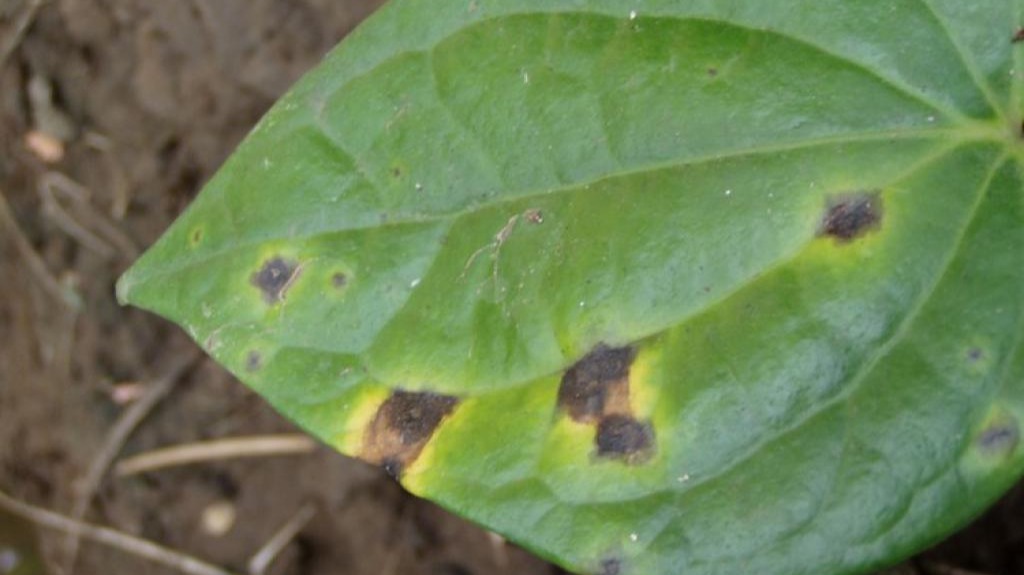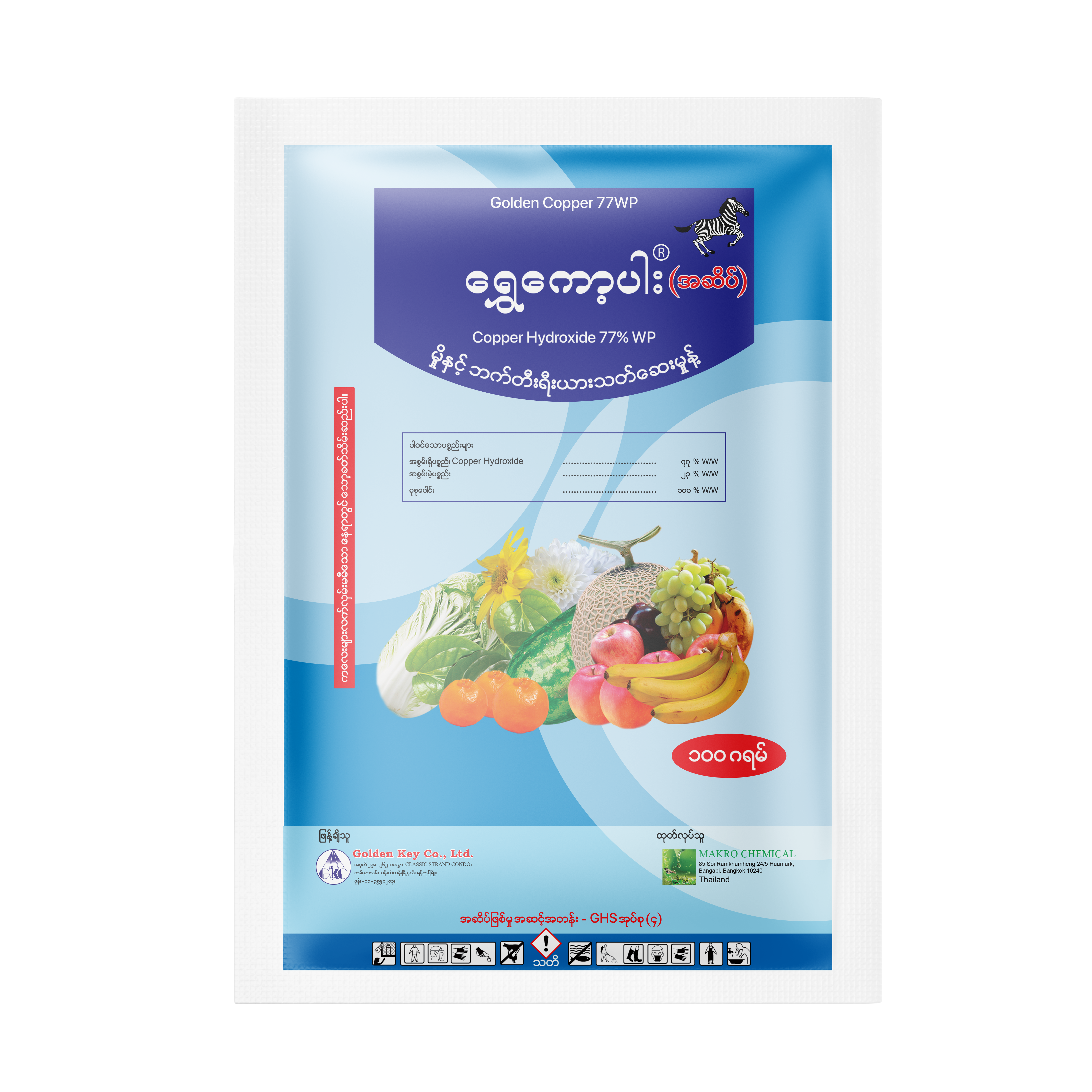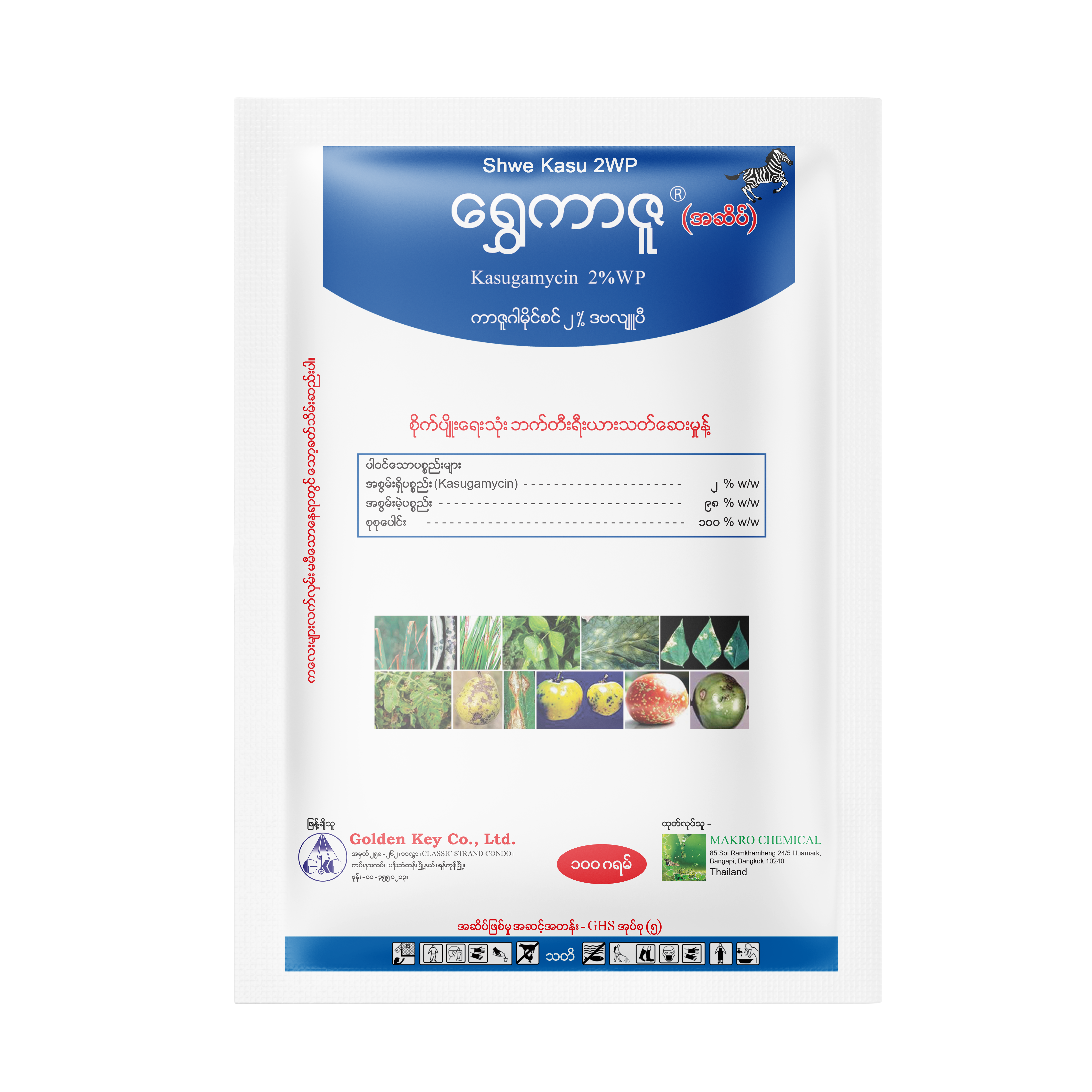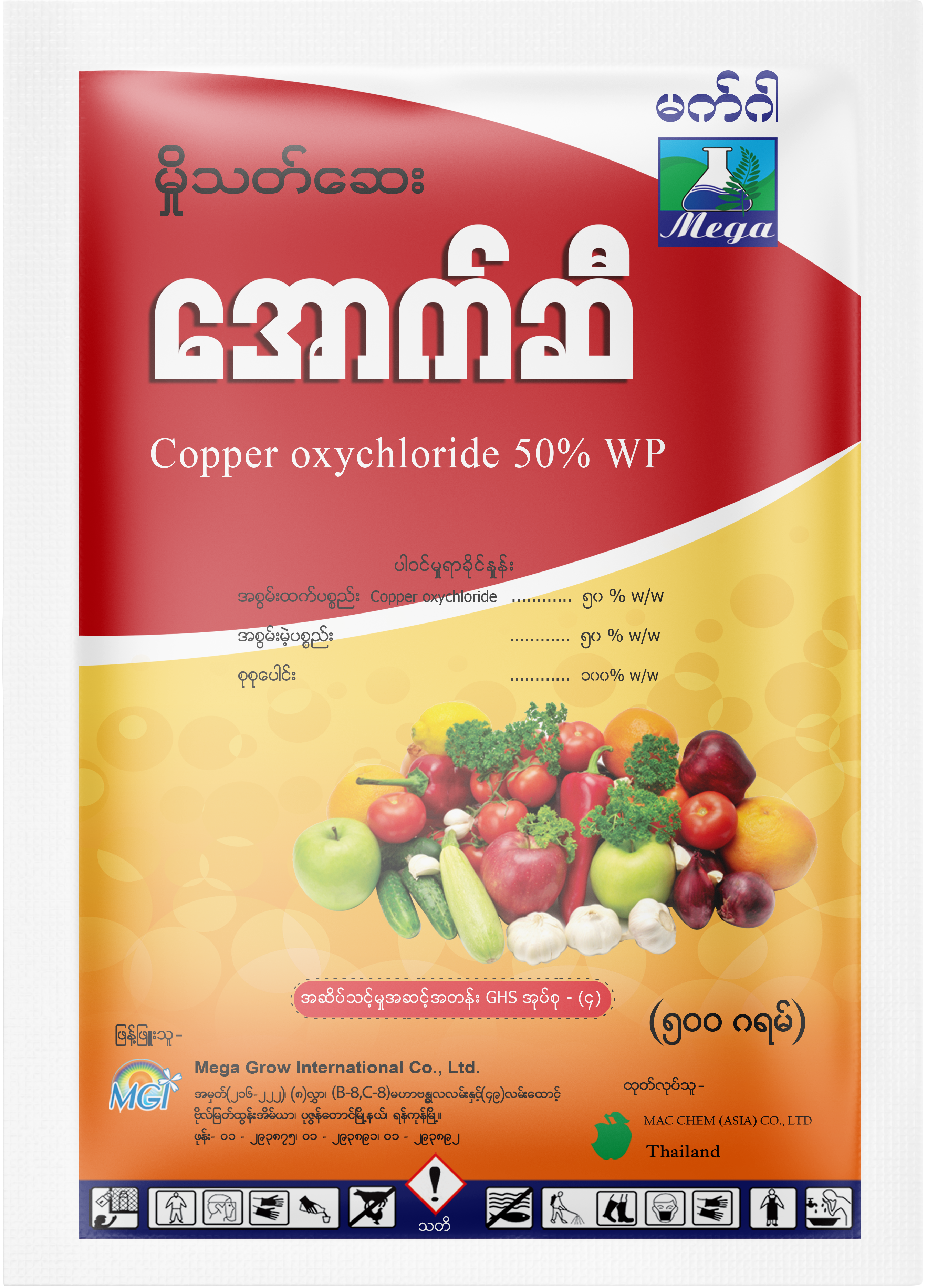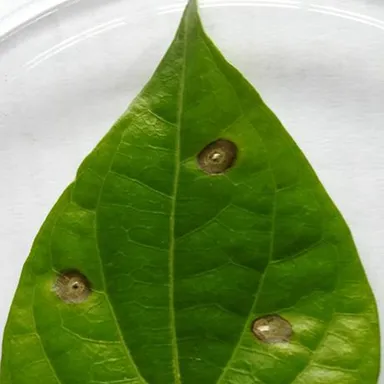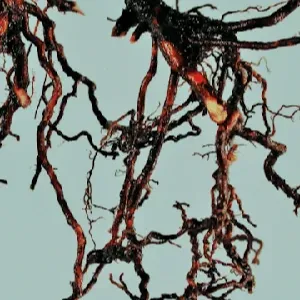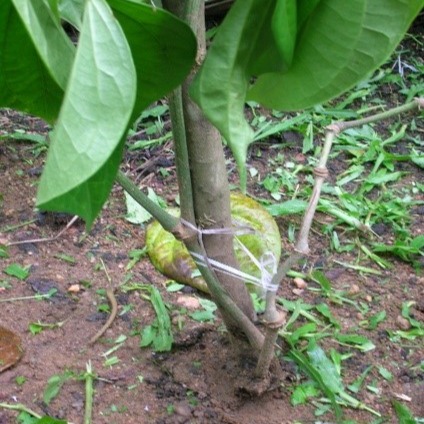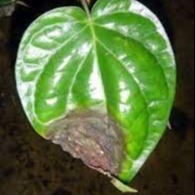Bacterial leaf spot
Symptom
This disease enters through the stomata on the underside of betel vine leaves, where small water-soaked spots first appear. On the upper surface, these lesions become visible as yellowish, oily streaks resembling grease marks. As the lesions expand between the leaf veins, they turn dark brown to black and are surrounded by a yellow halo. Eventually, the central portion of the lesion dries, darkens, and may crack open. During warm and humid seasons, individual lesions coalesce, leading to extensive blighting and premature leaf drop. The pathogen can also spread to the stem, producing elongated dark brown to black lesions on the nodes and internodes. For this reason, the disease is also known as “Yoe Mae” or “Sitpyote” as it causes rotting and breakage of nodes. The causal organism is a bacterium, Pseudomonas sp. To avoid this disease: Maintain moderate field moisture and ensure adequate light penetration. Avoid excessive application of nitrogen fertilizers. Apply potassium fertilizers as a priority to enhance resistance.


